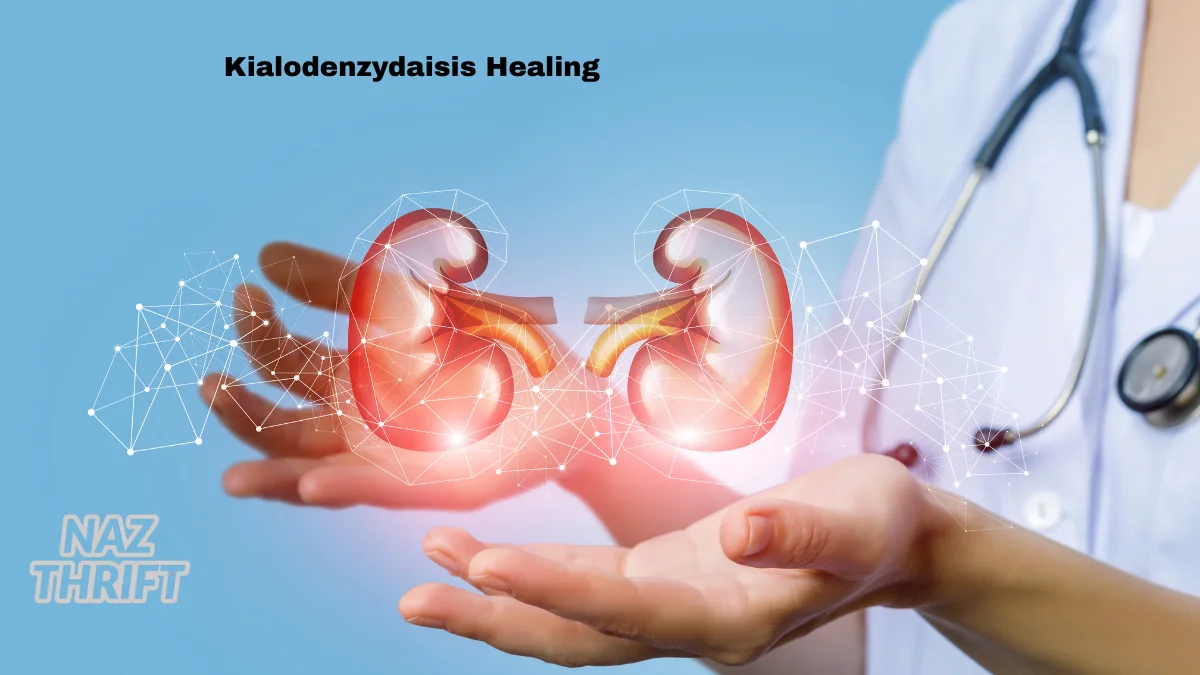What is Kialodenzydaisis?
Kialodenzydaisis is a term that encapsulates a complex set of characteristics within a specific context, primarily relating to its applications in various disciplines. The etymology of the word can be traced back to its roots in ancient languages, where “kialo” denotes a particular realm of study, and “denzydaisis” refers to a process of integration or convergence. Together, the term forms a unique concept that merits exploration for its relevance and implications.
The characteristics of kialodenzydaisis include its multifaceted approach to problem-solving and its adaptability across various fields such as psychology, sociology, and technology. This adaptability allows for a comprehensive understanding of phenomena that are often overlooked when considered in isolation. For instance, in the realm of social sciences, the implementation of kialodenzydaisis can facilitate a deeper comprehension of social dynamics, enabling researchers to merge qualitative and quantitative methodologies. By doing so, they can uncover insights that might remain hidden when employing only a singular approach.
The significance of studying kialodenzydaisis extends beyond academic discourse; it plays a pivotal role in fostering innovation and improvement in practical applications. One notable example is its impact on team dynamics in organizational settings. By leveraging the principles of kialodenzydaisis, teams can enhance collaboration and communication, leading to more effective outcomes. Furthermore, in technology, the integration of this concept can assist in the development of multifaceted applications, streamlining processes and improving user experiences.
In summary, understanding kialodenzydaisis is crucial for grasping its implications across various fields. By delving into its etymology, characteristics, and practical applications, stakeholders can comprehend its importance, leading to insightful developments and advanced solutions in an increasingly complex world.
The Origins and Development of Kialodenzydaisis

Kialodenzydaisis has emerged as a distinct phenomenon with roots that can be traced back to various cultural and intellectual movements throughout history. Its earliest foundations can be identified during the zenith of ancient civilizations, where interdisciplinary scholarship began to take shape. The term ‘kialodenzydaisis’ itself is believed to have first surfaced in texts describing complex interactions between different systems of thought, symbolizing a fusion of ideas that paved the way for future explorations.
As time progressed, the development of kialodenzydaisis was significantly influenced by notable thinkers and their contributions. In the Renaissance, scholars began to reassess classical knowledge, which provided impetus for the concept. Figures like Leonardo da Vinci and Galileo Galilei exemplified the importance of integrating disparate knowledge streams, which directly correlates with the evolution of kialodenzydaisis as a multidisciplinary approach. Their works laid the groundwork for future investigations, emphasizing observation and empirical evidence.
The technological advancements of the Industrial Revolution further propelled the notion of kialodenzydaisis by fostering interdisciplinary collaboration. Innovations in communication and transportation allowed for greater exchange of ideas across regions and cultures. Pivotal events, such as the establishment of international conferences, facilitated discussions around this concept, leading to greater recognition and formalization within various academic fields.
In the 20th century, the emergent field of systems theory began to articulate the principles underpinning kialodenzydaisis. Prominent figures like Norbert Wiener and Ludwig von Bertalanffy provided frameworks that articulated how diverse elements could interact and create coherent wholes. This conceptual clarity enabled further exploration and application across various disciplines, solidifying its relevance in contemporary discussions.
Today, understanding the historical trajectory of kialodenzydaisis not only highlights its rich past but also underscores its potential for future applications in a globalized world. Recognizing the key milestones, notable individuals, and transformative events within this journey provides essential context for appreciating its current significance and versatility.
The Impact of Kialodenzydaisis on Modern Practices
Kialodenzydaisis has emerged as a transformative force across a variety of contemporary practices and industries. Its intricate principles are being utilized in numerous fields, such as healthcare, technology, and environmental sustainability. The adaptability of kialodenzydaisis allows practitioners to leverage its concepts to enhance efficiency, creativity, and effectiveness in their respective domains.
In healthcare, for instance, the application of kialodenzydaisis has led to significant advancements in patient care methodologies. Practitioners are employing its frameworks to develop personalized treatment plans that are not only more effective but also cater specifically to individual patient needs. By integrating the tenets of kialodenzydaisis, healthcare providers are seeing improved outcomes and increased patient satisfaction. Innovative tools and protocols inspired by these principles are emerging, further solidifying its importance in modern medical practices.
Moreover, in the technology sector, companies are embracing the principles of kialodenzydaisis to enhance their product development processes. The emphasis on collaboration and iterative design promotes a culture of innovation, leading to the creation of more user-centric technologies. This approach not only reinforces the significance of user feedback but also fosters a sense of community among developers, ultimately pushing the boundaries of what is possible in the digital realm.
However, engaging with kialodenzydaisis is not without its challenges. Individuals and organizations may face obstacles such as resistance to change or a lack of understanding of its core principles. Addressing these challenges is essential for realizing the full potential of kialodenzydaisis in modern practices. Continuous education and training efforts, combined with insights from experienced practitioners, are vital for overcoming these hurdles and fully harnessing the benefits of this influential concept worldwide.
Future Trends and Predictions for Kialodenzydaisis
The future of kialodenzydaisis promises to be as intriguing as its past, with numerous emerging trends indicating a dynamic evolution in its study and application. Researchers are increasingly focusing on the interdisciplinary approach to understand the complexities surrounding kialodenzydaisis, combining insights from fields such as biology, technology, and environmental science. This holistic viewpoint may lead to more comprehensive models that not only predict outcomes but also inform effective interventions.
One significant trend is the advancement of technology, which plays a crucial role in the ongoing research of kialodenzydaisis. Innovations such as artificial intelligence and machine learning are being integrated into data analysis processes, allowing for the examination of large datasets in unprecedented ways. This technological leap can reveal previously hidden patterns and correlations in kialodenzydaisis research, potentially leading to groundbreaking discoveries. For instance, predicting the behaviors or impacts of specific species related to kialodenzydaisis could revolutionize management practices.
Moreover, the global focus on sustainability and conservation may reshape the direction of kialodenzydaisis studies. As environmental concerns escalate, scientists and policymakers are prompted to evaluate the implications of kialodenzydaisis on biodiversity and ecological health. Collaborative efforts across borders might become more pronounced, fostering international research initiatives that address the global challenges posed by kialodenzydaisis and its related phenomena.
Additionally, the educational landscape surrounding kialodenzydaisis is anticipated to evolve. As awareness intensifies, academic institutions may increase their offerings related to this field, encouraging a new generation of scholars and practitioners. Such educational trends will enable more individuals to engage with and contribute to research on kialodenzydaisis, enhancing its knowledge base and potential applications. Adapting to these trends will be essential as we navigate the complexities of a rapidly changing world, positioning kialodenzydaisis as a pivotal aspect of future research and practice.










